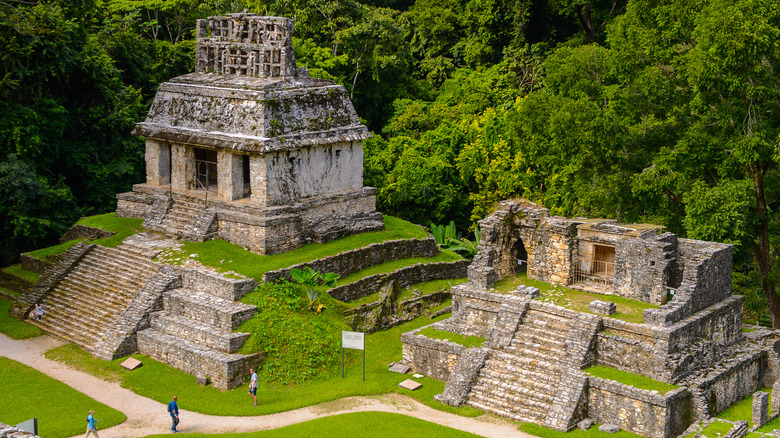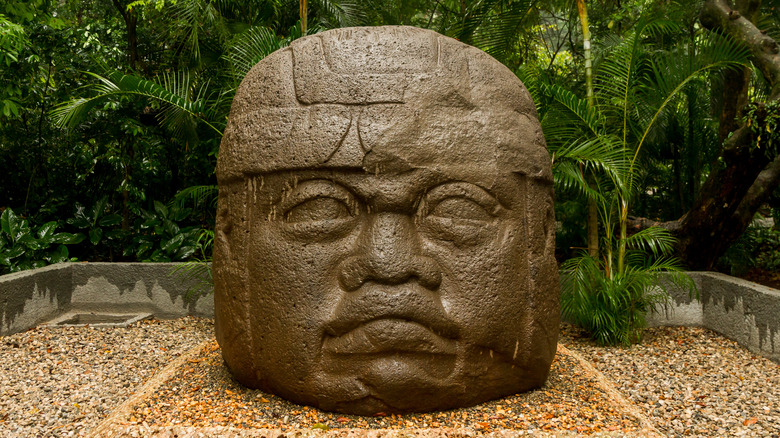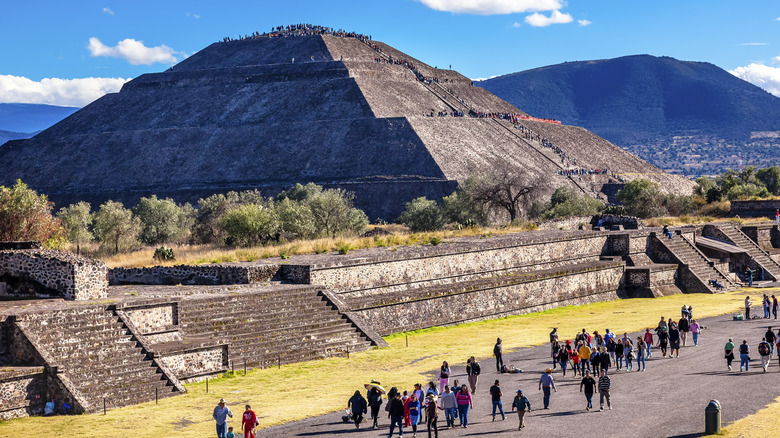Where Is The Historical Mesoamerican Region?
The term Mesoamerica generally describes what some people refer to as Middle America — the swath of land between North and South America. In Dimension and Antropologica, anthropologist Paul Kirchoff writes that he came up with the phrase in 1943, attempting to "identify what the peoples and cultures of a specific part of the American Continent shared in common, and that which set them apart from the rest."
Specifically, Mesoamerica refers to the modern areas of Belize, Guatemala, Honduras, El Salvador, parts of northern Costa Rica, and southern Mexico. The geography of this land is diverse, consisting of tropical areas, deserts, inland mountains, and low coastal plains (via World Atlas). Unsurprisingly, an assortment of cultures emerged from these varied geographies. Humans lived in Mesoamerica as far back as 21,000 BC, and some of the more well-known civilizations include the Olmecs, Zapotecs, Teotihuacános, Mayans, and Aztecs (via Britannica).
The Olmecs were considered the 'mother culture' of Mesoamerica
Prior to the pre-Columbian era, Mesoamerican history consists of pre-Classic (1500 BC to 200 AD), Classic (200 AD to 900 AD), and post-Classic periods (900 AD to 1428 AD), reports Britannica. The Olmec civilization, dating back to 1,200 BC, was considered the first great Mesoamerican civilization, occupying most of southern Mexico and establishing villages along the Gulf of Mexico (via World History). They were considered the "mother culture" of other civilizations forming in the area, according to National Geographic.
Some of the more stunning artifacts from the Olmecs were their massive statues, including large heads carved from stone, which still exist. Dated to sometime around 1150 BC, some of these statues are almost 9 feet tall. Experts believe Mesoamericans used hard stones to carve the faces in the rock and then hammered reeds and wet sand in the rock to develop more intricate details like eyes, nostrils, and dimples. Historians don't know exactly where the head statues were originally constructed because they were moved periodically for certain rituals, per World History.
Mesoamerica is home to pyramid temples
Along with large stone head structures, one of the most impressive features of Mesoamerican architecture is its pyramid temples. Historians believe that the oldest of these structures is the La Venta pyramid located near Tabasco in the Gulf of Mexico, per Britannica. Historians believe the pyramid was built between 1,000 and 400 BC, and it is one of many stepped pyramids in the area, reports History.
Teotihuacán, located closer to modern-day Mexico City, was one of the largest communities in Mesoamerica, and it houses some of the most popular pyramid temples, including the Pyramid of the Sun and the Pyramid of the Moon. The Pyramid of the Sun, constructed around 100 AD (via World History), is the third largest pyramid in the world, and it was probably used for religious gatherings. The site is a popular tourist attraction and visitors can still climb 248 uneven steps to the top of the pyramid, according to Mexico Archeology.


